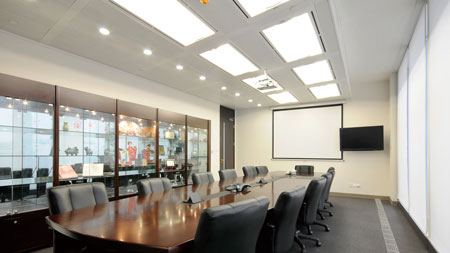
Five Guaranteed Ways to Keep Your Cafeteria Clean and Up to Code
November 21, 2016
By Breann Marvin-Loffing / Special to Healthcare Facilities Today
Studies are frequently released on the cleanliness of school cafeterias, as they can be hot spots for germs and bacteria with hundreds of children using them daily. But have you ever considered what could be growing in your healthcare facility’s cafeteria or the commercial kitchen that serves it? While you may expect adults to be cleaner than the average elementary school student, germs can still easily manifest themselves where food is being prepared.
To avoid the spread of bacteria, healthcare facility managers should ensure employees are using proper food handling and sanitation techniques at all times. A lack of cleanliness in a cafeteria and its commercial kitchen can not only pose a real threat to the health of customers and employees, but may additionally result in a failed health inspection.
Whether the arrival of a health inspector comes as a surprise or not, the following steps can help healthcare facility managers be prepared to receive a passing grade at any time.
1. Put yourself in the health inspector's place. The best way to feel confident about passing a health inspection is to regularly conduct your own self-inspections in accordance with the local health department's regulations. If you know what an inspector will look for, with a keen eye toward issues of maintaining cleanliness, you'll be able to proactively solve any problems that could prevent your building from receiving a passing grade.
2. Encourage handwashing among employees. It may sound like common knowledge to wash your hands, but according to a CDC study, only 32 percent of restaurant workers wash their hands before preparing food. This not only spreads germs, but also contributes to food-borne illnesses, especially if employees are not properly washing their hands prior to and after handling raw foods and those that contain specific allergens. To remind employees of these dangers, post signs by all sinks and bathrooms. It is also a good idea to have a designated sink only for handwashing pre and post food preparation.
3. Disinfect your surfaces. Just because you can't see it, doesn't mean it isn't there. Some bacteria can live on surfaces for months, making it imperative to sanitize all surfaces properly and frequently. Simply rinsing off a cutting board or wiping off a countertop after cutting raw foods and preparing ingredients is not enough to remove bacteria. In addition to cleaning surfaces before and after food handling, make sure to also sanitize all frequently-touched surfaces including handles, tables and chairs in both the kitchen and dining areas.
4. Properly maintain your hood exhaust system. The vast majority of healthcare facility and kitchen managers do not have the equipment or training to properly maintain the hoods, exhaust ducts and roof exhaust fans that make up a kitchen's heat and grease exhaust systems. These must be professionally and regularly cleaned to ensure your kitchen is both safe from fire and sanitary. Cleaning only the visible and easily accessible portions of a hood system will not adequately maintain an exhaust system. If these systems are not cleaned properly, even a relatively small amount of grease can result in dangerous fire. Exhaust fires spread quickly and often result in serious property damage, as well as threaten the life and safety of your staff, customers and nearby businesses. It is essential healthcare facility managers hire reputable service providers and monitor the maintenance of their exhaust systems.
5. Don't just clean what the eye can see. Health inspectors won't only be looking to see that the visible parts of your kitchen are clean; they'll also be looking in those hard-to-reach spaces where dirt and bacteria can grow and thrive. Make sure you clean all the nooks and crannies of your kitchen on a regular basis, including closets, storage units and countertop corners.
Proper sanitation and cleaning methods are essential for passing a health inspection, and are almost always the reason inspectors may cite a cafeteria with a health violation. By following these steps, you will not only pass your inspection, but you will also make your healthcare facility cafeteria a healthier and cleaner environment for both your daily customers and your employees.
Marvin-Loffing, CFE, is the Vice President of Franchise Operations for HOODZ International.
This Quick Read was submitted by Cathryn Jakicic, Healthcare Industries Editor, Facilities.net.
Next
Read next on FacilitiesNet












